
If you’re stuck on or frozen at the Checking for updates message when you try to install Windows updates in Windows 7, don’t worry, we’re here to help. Many Windows 7 users are able to solve it with one of the following solutions.
We’ve put together five solutions below to fix the problem. You may not have to try them all; just work your way down until you find the one that works for you.
1. Run Windows Update troubleshooter
2. Update drivers
3. Restart the Windows Update service manually
4. Update Patches
5. Change DNS server settings
Method 1: Run Windows Update troubleshooter
Whenever you’re having problems with Windows Update, the easiest method you can try is to run the built-in troubleshooter. Running Windows Update troubleshooter restarts the Windows Update service and clears the Windows Update cache. This will fix most of the Windows update not working issues.
Here’s how to run Windows Update troubleshooter:
- Click the Start menu button at the bottom left corner of the desktop.

- Type troubleshooting in the search box and select Troubleshooting.
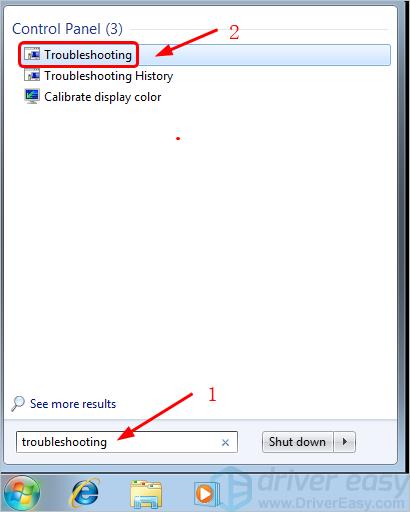
- In the System and Security section, click Fix problems with Windows Update.
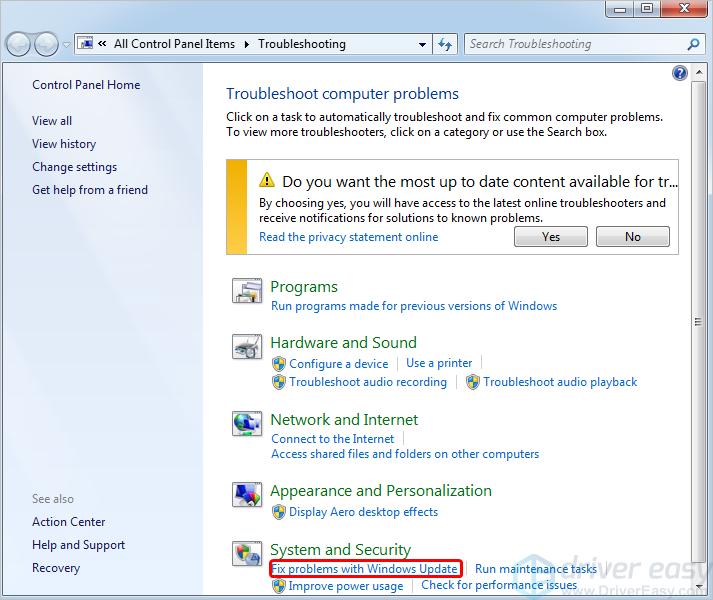
- Click Advanced.
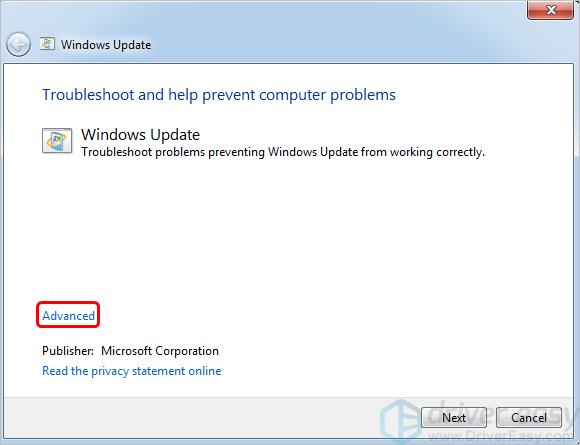
- Click Run as administrator, and ensure the checkbox next to Apply repairs automatically is selected.
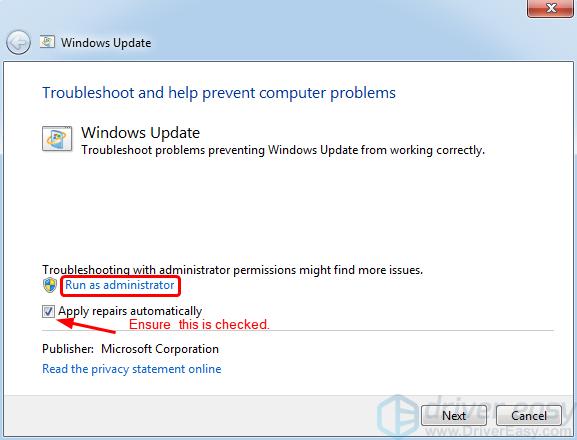
- Click Next then Windows will detect and fix the problems automatically. The process may take a few minutes.
- After the process is done, check to see if the Windows Update stuck issue is resolved.
Method 2: Update drivers
The problem can be caused by faulty drivers especially the faulty network card drivers. So one of the things you should do is to verify that all your devices have the right drivers, and update those that don’t.
If you don’t have the time, patience or computer skills to update the drivers manually, you can do it automatically with Driver Easy.
Driver Easy will automatically recognize your system and find the correct drivers for it. You don’t need to know exactly what system your computer is running, you don’t need to risk downloading and installing the wrong driver, and you don’t need to worry about making a mistake when installing.
You can update your drivers automatically with either the FREE or the Pro version of Driver Easy. But with the Pro version it takes just 2 clicks (and you get full support and a 30-day money back guarantee):
- Download and install Driver Easy.
- Run Driver Easy and click the Scan Now button. Driver Easy will then scan your computer and detect any problem drivers.
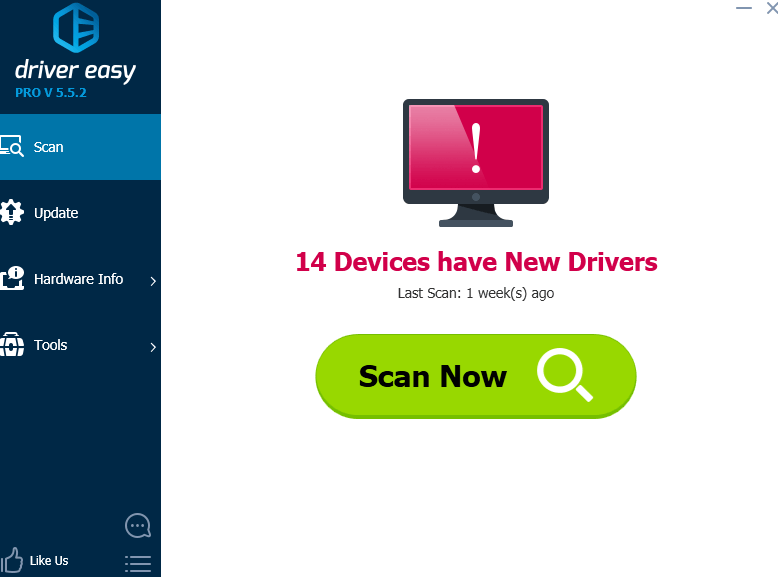
- Click the Update button next to any flagged device to automatically download the correct version of its driver, then you can manually install it (you can do this with the FREE version).
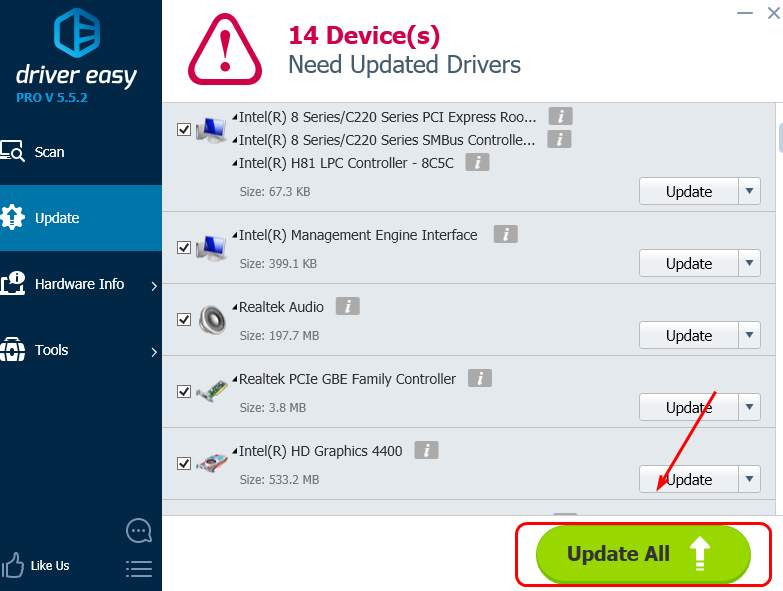
Or click Update All to automatically download and install the correct version of all the drivers that are missing or out of date on your system (this requires the Pro version – you’ll be prompted to upgrade when you click Update All).
- After updating the drivers, check to see if the Windows Update stuck issue is resolved.
Method 3: Restart the Windows Update service manually
To fix the Windows Update stuck issue, you can try to restart the Windows Update service manually.
You can follow these steps to restart the Windows Update service:
- Click the Start menu button at the bottom left corner of the desktop.

- Type cmd in the search box, then right-click on cmd and select Run as administrator.
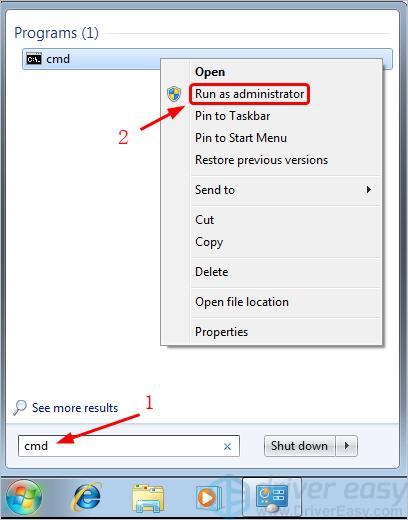
- Type net stop wuauserv and press the Enter key on your keyboard. After a few minutes, you’ll see a message on the screen saying The Windows Update service was stopped successfully.
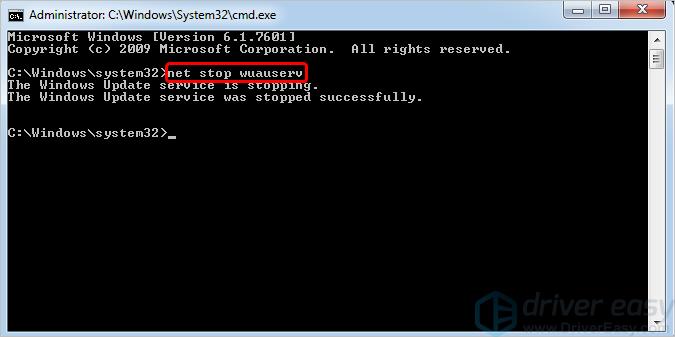
- Type net start wuauserv and press the Enter key on your keyboard. Then the Windows Update service will be started again.

- Check to see if the Windows Update stuck issue is resolved.
Method 4: Update Patches
If you miss some Microsoft patches in your PC, Windows Update won’t work properly as it should. To fix it, you can download the patches and install them. Here’s how:
- On your keyboard, press the Windows logo key and click Control Panel.
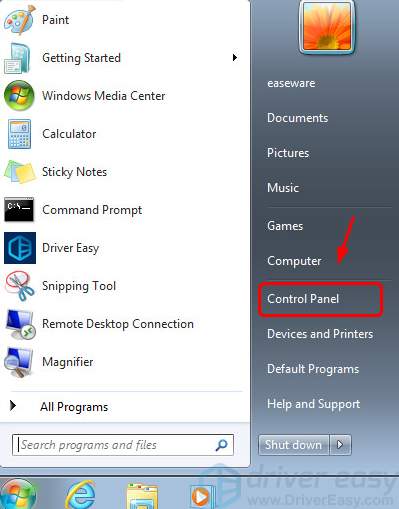
- View by Large icons and click Windows Update.
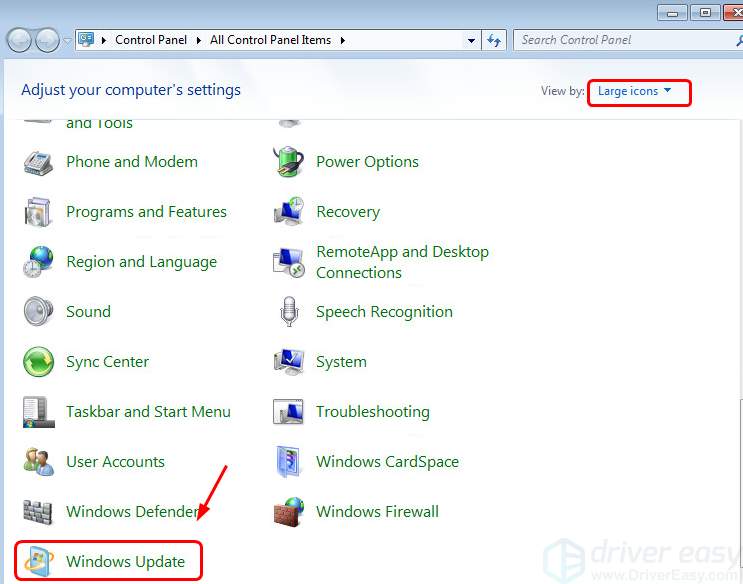
- Click Change settings.
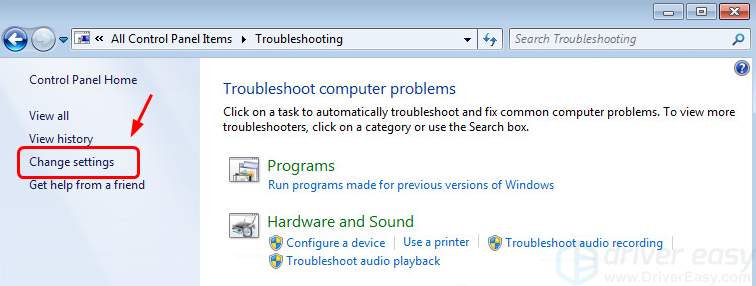
- Under the Important updates section, select Never check for updates (recommended). Then click OK to save and continue.
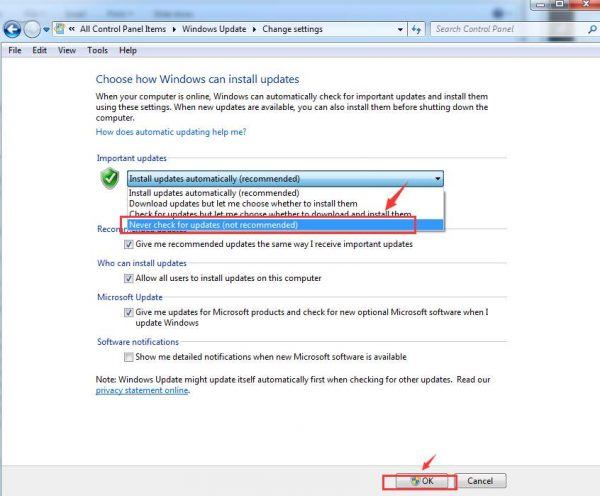
- Restart your computer.
- Go to the Microsoft support website, and download the following updates:
KB3102810
KB3083710
KB3020369
KB3050265
KB3172605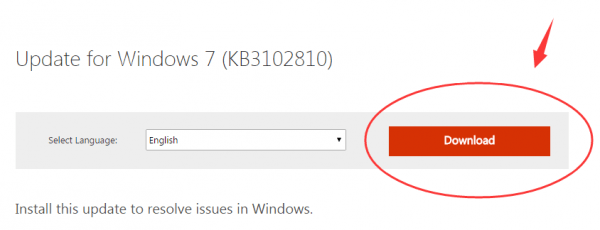
Choose accordingly the version you need, 64-bit or 32-bit. Place them on your PC desktop.
- Reboot your computer again.
- On your keyboard, press the Windows logo key and R at the same time. Type services.msc and press Enter.
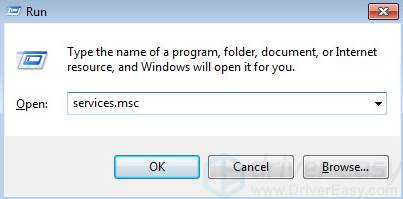
- Right-click Windows Update and click Stop.
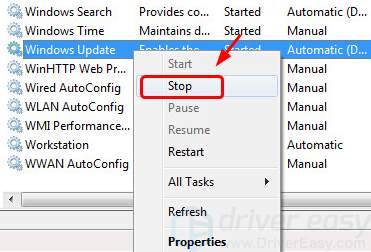
- Go to C:\Windows, right-click SoftwareDistribution and click Delete.
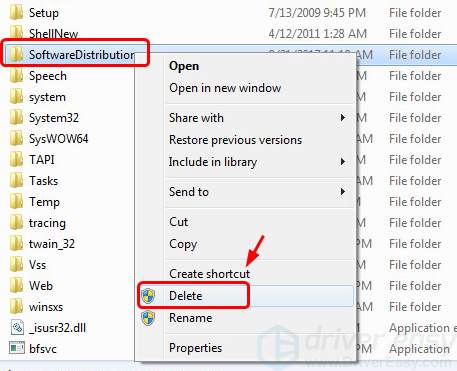
- Go to your PC desktop, and double-click the KB 3102810, KB3083710, KB3020369, KB3050265, KB3172605 setup files to install.
- Reboot your computer.
- Follow the path: Start button > Control Panel > Windows Update (View by Large icons).

- Click Check for updates.
- Wait for while for Windows to search for the updates for you. You can also turn on the Windows Update service that we turned off if you like.
Method 5: Change the DNS server settings
Windows Update not working issue can also be caused by faulty DNS server settings. To fix it, you can modify the settings:
- On your keyboard, press the Windows logo key and click Control Panel.

- View by Large icons and click Windows Update.
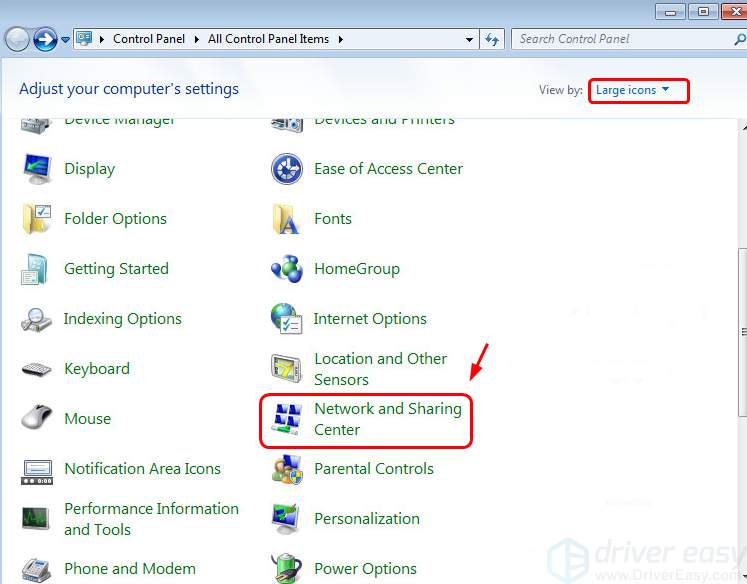
- Click Change adapter settings.
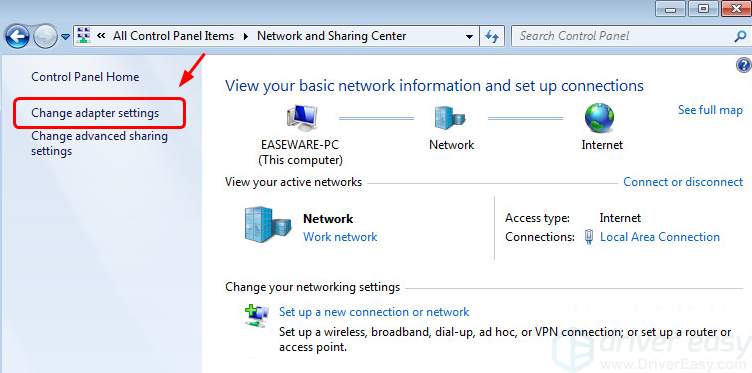
- Right-click the connection for which you want to configure Google Public DNS and click Properties.

- Select Internet Protocol Version 4 (TCP/IPv4) or Internet Protocol Version 6 (TCP/IPv6) and then click Properties.
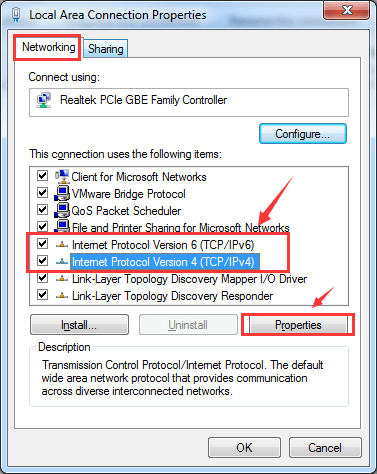
- Click the Advanced button.
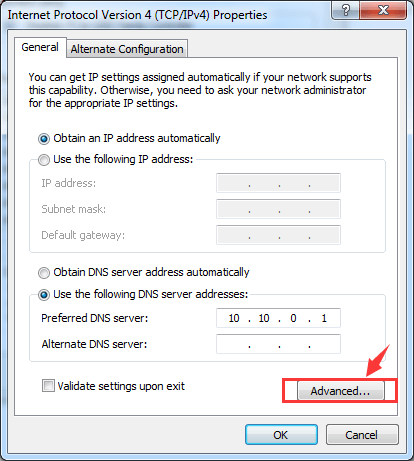
- Go to DNS tab. If you can see any DNS server IP addresses listed, write them down for future reference. Then Remove them from this window.

- Click the Add… button, then type the following IP addresses of the Google DNS servers:
- For IPv4: 8.8.8.8 and/or 8.8.4.4.
- For IPv6: 2001:4860:4860::8888 and/or 2001:4860:4860::8844
Click Add.
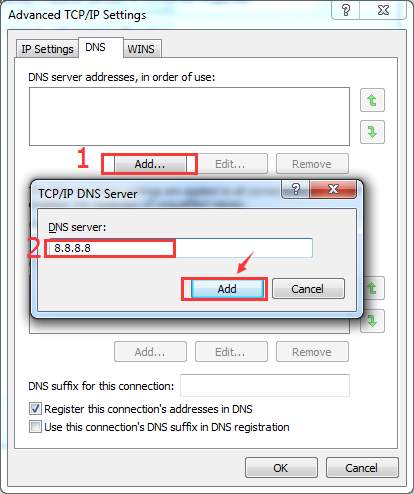
- Click OK to save the change.
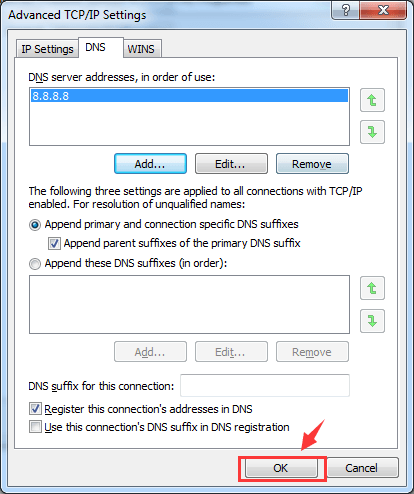
- Now check your Windows Update again, see if the problem is solved.
If you have any questions, please feel free to leave your comments below. We’d love to hear of any ideas or suggestions.





